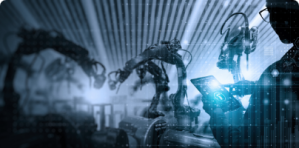Digital Twin Technology in Manufacturing Explained
Manufacturing technology is constantly evolving. In today’s world, it’s not uncommon to see features like robots, augmented reality, and more spread across the modern factory floor. But oftentimes, the assets providing some of the most incredible benefits to a production facility aren’t so obvious. Some of the most valuable instead collect data from the physical machines and various processes. It may not be as exciting as a robot or AR, but data offers immense value by showing users exactly what’s happening throughout their buildings. One prominent example? A digital twin. Though digital twin technology in manufacturing is relatively new, it offers incredible advantages to the companies that have already begun to utilize it.
What is a Digital Twin?
Digital twin technology, which is also sometimes referred to as a virtual twin or virtual twin technology, is the computerized model of a real-world object or process. Digital twin modeling is a mirror of these real-world elements and can show anything from a single device on the plant floor up to a massive assembly line filling the entire facility. It can be used in just one location or across hundreds of production facilities throughout the world. With these manufacturing digital twins, stakeholders are able to utilize a convenient virtual view that helps them easily understand precisely what’s happening with the physical objects through the collection and interpretation of data.
Industry 4.0 drives smart technology adoption, enabling industrial businesses to leverage operational data efficiently.
Unlocking the potential of IIoT offers real-time insights, optimized operations, cost reduction, and increased productivity. Our whitepaper explores IIoT adoption challenges, cloud infrastructure benefits, edge computing integration, and future trends in cloud-based IIoT connectivity platforms. Discover how Process Automation Solutions can unleash the trapped value in your OT data and harness the power of IIoT.
Real-World Value from Actionable Data
The key benefit of digital twin technology for manufacturers is data. But data by itself doesn’t always mean anything. Stakeholders must understand what the data means and how to interpret it so that they can leverage it for the benefit of their companies. This is where virtual twin modeling comes into play. Real-world gains that come with the data provided by digital twins include:
- Standardization: Standardizing data creates uniformity across a variety of different sources, allowing users easier readability through consistency, even when working with multiple platforms. This promotes clear communication and makes work easier and more efficient.
- Contextualization: Interpretation can be one of the most difficult aspects of data collection, but digital twin technology provides the meaning that stakeholders need. Virtual twins link each individual data point to the relevant process or procedure, making it simple for users to understand it.
- Accuracy: Because data is mirrored in real time, digital twins are highly accurate. The margin for error is dramatically reduced and gives the ability for truly informed decision making.
- Consistency: Unlike other forms of data collection, virtual twin technology creates consistency between the information provided from a variety of sources, whether it’s the smallest machine on the floor or the assembly lines from multiple plants. This allows users to effectively analyze the information and make the best decisions possible with that data.
- Interoperability: Because this tech standardizes all data points, various systems are better able to communicate and work with one another. Operations in a complicated IIoT environment become seamless with the help of digital twin modelling.
Digital twin technology creates actionable advantages through valuable data. Not only that, but there are also tangible benefits to utilizing these incredible models. Contextualized, standardized data can:
- Increase annual profits and revenue growth
- Standardized data allows faster speed to market and improves the ability to make sales to target customers
- Improve efficiency and future planning
- Valuable data helps manufacturers better predict the future of their systems and make the right plans for the future of their businesses
- Reduced expenses and labor company wide
- Accurate data means manufacturers won’t waste time intervening on something they’ve already predicted
Leverage Manufacturing Digital Twin Technology Today
Digital twin technology can offer an astounding array of benefits for nearly anyone in the manufacturing space. From food processing to automotive production or batch pharmaceutical creation and beyond, there are a wide range of reasons to leverage virtual twins in nearly any vertical. We provide all the details you might want, including multiple digital twin use cases in manufacturing, how to standardize and contextualize IIoT data, and much more in our latest whitepaper, “IIoT Evolution — Standardization & Contextualization.” Check it out at this link and get started on your way to cost savings, revenue growth, and the ability to truly leverage actionable data for incredible value.







